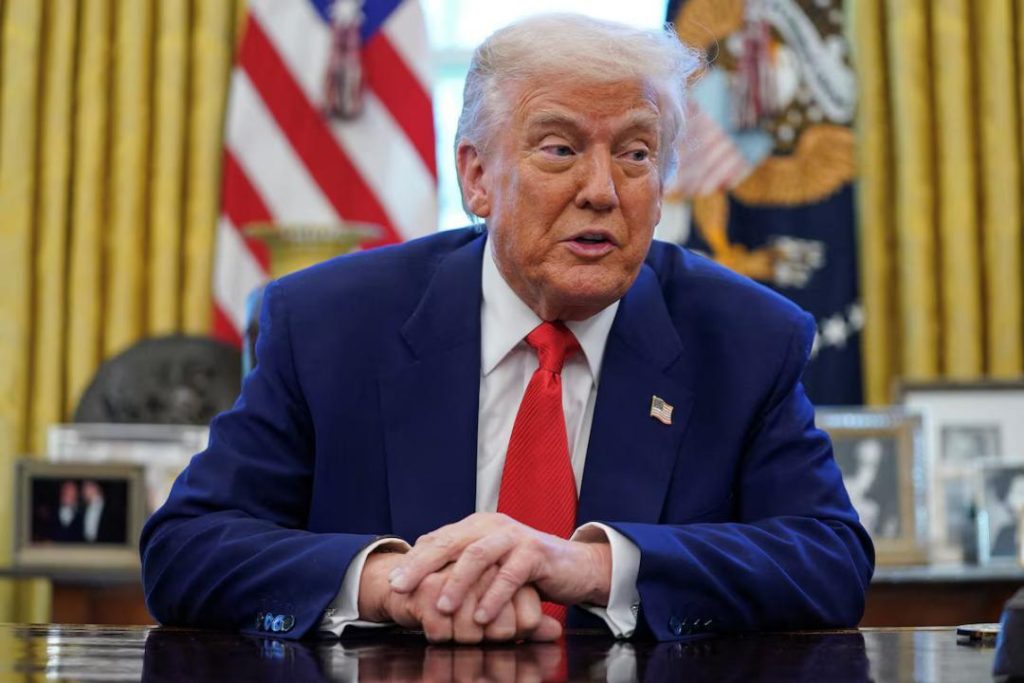
Total Reset Negotiated: Donald Trump on US & China Trade Talks
In a significant development in the ongoing trade talks between the United States and China, President Donald Trump has announced that a “total reset” has been negotiated in a “friendly, but constructive manner”. The talks, which began on May 10th in Geneva, Switzerland, have seen significant progress made, with Trump expressing optimism about the future of trade relations between the two economic superpowers.
The negotiations, which were initially scheduled to take place in Beijing, were moved to Geneva due to the ongoing pandemic. The talks were expected to be a crucial step towards resolving the ongoing trade tensions between the US and China, which have been brewing for years.
According to Trump, the talks have achieved a significant breakthrough, with both sides agreeing to re-establish a more balanced trade relationship. The US President emphasized that the talks were conducted in a friendly and constructive manner, with both sides working together to find a mutually beneficial solution.
“We want to see, for the good of both China and the US, an opening up of China to American business,” Trump said in a statement. “Great progress made,” he added, signaling a positive outcome from the talks.
The negotiations were led by US Trade Representative Robert Lighthizer and Chinese Vice Premier Liu He, who have been engaged in a series of talks over the past year to resolve the trade dispute. The talks have been marked by a series of setbacks and disagreements, but it appears that both sides have been able to find common ground.
So, what does this mean for the future of US-China trade relations? Firstly, it suggests that both sides are committed to finding a solution to the trade dispute, which has had significant economic implications for both countries. The US has imposed tariffs on over $360 billion worth of Chinese goods, while China has retaliated with its own tariffs on US goods.
Secondly, the “total reset” negotiated by Trump suggests that both sides are willing to make concessions to achieve a more balanced trade relationship. This could involve reducing or eliminating tariffs, increasing market access for US businesses, and strengthening intellectual property protections.
Thirdly, the talks could pave the way for a broader agreement on issues such as technology transfer, currency manipulation, and government subsidies. These issues have been at the heart of the trade dispute, and resolving them could help to create a more stable and predictable trade environment.
However, not everyone is celebrating the outcome of the talks. Some critics have expressed concerns that the agreement may not go far enough to address the underlying structural issues in the US-China trade relationship. Others have warned that the agreement may only be a temporary fix, and that the trade tensions between the two countries could return in the future.
In conclusion, the “total reset” negotiated by Donald Trump on US-China trade talks is a significant development that could have far-reaching implications for the global economy. While the outcome is not without its challenges, it suggests that both sides are committed to finding a solution to the trade dispute and creating a more balanced trade relationship.
As the trade talks continue to unfold, it will be important to monitor the progress being made and evaluate the impact of the agreement on the US-China trade relationship. One thing is certain, however: the future of US-China trade relations will be shaped by the outcome of these talks, and the implications will be felt around the world.
Source:
https://www.reuters.com/world/china/china-us-trade-talks-begin-geneva-2025-05-10/






